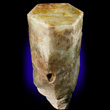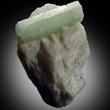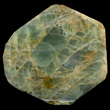I have a set of:
-Norton waterstones
-Suzuki Ya house brand waterstones - pretty much the full set
-Juuma 800 and 2k stones
-Suehiro Rika G8
-Ultrasharp 300/1200 combination stone
-one of these combination stones:WoodRiver-Diamond-Stone-10-Inch but from a different brand
-Set of DMT diasharps and one C/F duosharp
-Norton Crystalon JUM3
-several of my Washboard blocks used with silicon carbide wet/dry or paper
-Foss combination stone
The Norton waterstones work great on common carbon steels and lower RC stainless - they are very reluctant to form large burrs and do not load easily. They wear fast but grind quickly on the aforementioned steels.
Suzuki Ya stones are the best I have for a lot of steels, but they really shine on high RC carbon steel woodworking tools. Very hard, do not wear easily, do not load easily as long as they are flushed often.
Juuma 800 and 2k and crazy hard for waterstones. They work well on relatively low carbide content stainless and carbon steels at high Rockwell. They are not terribly fast and are prone to loading but make a very good edge on just about everything
Suehiro Rika G8 is my most favorite finishing stone for all low Vanadium stainless ad if I had to only use one finishing waterstone this would be it.
Ultrasharp 300/1200 was a gift from a buddy - I use this often on high carbide stainless. This is a very good 1-2 stone to reset bevels and finish the edge off for a lot of steels. Bond quality seems to be very good, good grind speed, good value.
Wood-River combination stone - this can be found on the web under a number of brand names at different price points. Feels somewhat cheap but is a good performer and travels well. Also a great 1-2 combination stone for high carbide or convenience sharpening.
DMT - I like and use the full set, though most of the time I just use the Ultrasharp or Wood River diamond plates instead. A bit overpriced and have had issues w/ three of them over the years, two of which were taken care of by customer service, os no harm no foul. Their EEF diasharp is a must-have for situations where high Vanadium needs to be taken to a very bright finish.
Norton Crystalon is a must-have for anyone into their sharpening in general. Very fast, all purpose stone that can put a utility edge on any steel and do so quickly. In a pinch I have even used it to finish off some of my wood chisels when doing no finesse jobs and it can restore a nice armhair shaving edge to a damaged tool very quickly. Great feedback, great value, the reclaimed mud from this when used with oil is one of my favorite improvised stropping compounds.
Washboard blocks that I make and sell are what I consider to be a "ghetto waterstone" as they give good feel and the convenience of working with wet/dry sandpaper in a format that produces a much flatter edge bevel than using wet/dry over a continuous surface. Used with plain paper or paper and compound I finish off almost all my edges with one of these.
The Foss combination stone is the fastest combi stone I own, the fastest waterstone I own, period. The coarse side properly dressed is a beast, the "fine" side is just refined enough to set the edge up for a microbevel. This stone combined with the Suehiro Rika G8 can handle a great deal of sharpening chores - maybe not as efficiently as some other stone sets, but they are always an option. On its own it does not make very good edges but is a good set-up stone.
I have a number of other stones, but these are the ones that are close at hand around my bench - I have stopped using any of my King waterstones, Arkansas, ceramics, and prefer the Crystalon to my India stones (YMMV).









